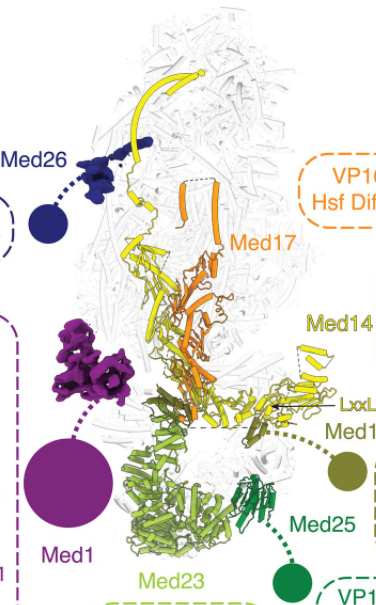Recently, in a research report entitled “Structure of the human mediator bound transcription pre-initiation complex” published in the journal Science, scientists from Northwestern University and other institutions in the United States first observed multiple subunit machines responsible for regulating gene expression in human cells through research. According to the researchers, the complex called Med-PIC (mediator-bound pre-initiation complex) is the key determinant of which genes are activated and which genes…
cryo-EM
Studies Reveal the Structural Basis of Serotonin Receptor as a Target of Depression
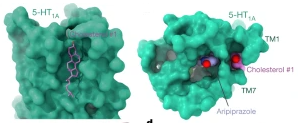
Serotonin is an important neurotransmitter, which plays a role in the brain and endows people with the ability to feel happiness. Therefore, it is also known as a “happy neurotransmitter”. The serotonin system is involved in a wide range of physiological functions of the human body, including the regulation of brain memory, cognition, emotion, learning, and addiction. The disorder of the serotonin system may cause a variety of mental diseases…
Nature: A Human Antibody Can Potently Neutralize Multiple Coronaviruses Including Sars-Cov and Sars-Cov-2
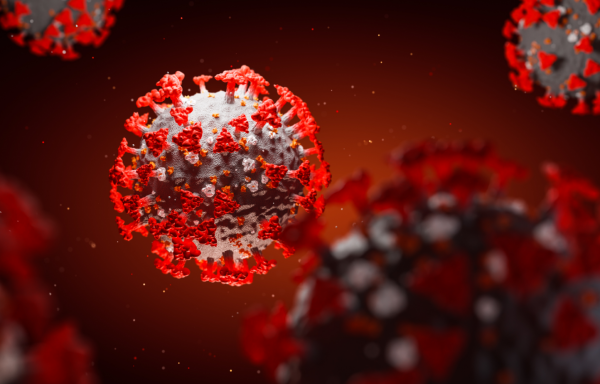
In a new study, researchers from the Swiss Humbs Biomed SA and the University of Washington found an antibody identified for the first time in blood samples from a patient with the severe acute respiratory syndrome (SARS, commonly known as atypical pneumonia) in 2003 which can inhibit related coronaviruses, including the new coronavirus SARS-CoV-2 that causes 2019 coronavirus disease (COVID-19). This antibody, called S309, is currently in rapid development and…
Studies Revealed the Cryo-EM structure of Human Lysosomal Cobalamin Exporter ABCD4
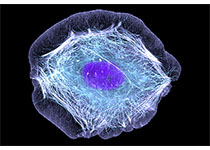
Recently, Yuxing, Chen and Congzhao, Zhou, professors of National Research Center for Microscale Material Science and Department of Life Science and Medicine of University of Science and Technology of China, collaborated with Linfeng Sun’s group to analyze the near-atomic resolution 3D structure of human lysosomal vitamin B12 efflux protein ABCD4 using cryo-EM technology for the first time, providing a basis for in-depth understanding of the molecular mechanism of this type…
New Research Reveals The Structure of Key Electrical Switches in The Brain

Scientists have revealed the structure of key receptors in the brain that are involved in learning, memory, behavior, and mood. The new study published in the journal of Science reveals the structure of the AMPA receptor in its natural state for the first time. This discovery will bring new ideas to uncover the mechanisms behind a series of neurological disorders and diseases. “There are some basic electrical switches in…
A Study Discover New Targets for Targeting Caliciviruses

Norovirus is highly contagious and very difficult to control. In general, the Norovirus epidemic broke out in hospitals, nursing homes, schools, hotels, and cruise ships. Calicivirus, including Norovirus and sapovirus, is also an important animal pathogen, leading to ‘cat flu’ associated with high mortality in domestic cats. In a new study, British researchers used cryo-electron microscopy to study the structure of the feline calicivirus that causes cat flu to better…
Nature: Tc Toxin Activation Requires Unfolding and Refolding of a β-Propeller

Bacteria have established strategies for infecting organisms and utilize them as a source of nutrients. Many bacteria use their secreted toxins to simply pierce the outer shell of the cell to destroy the cell membrane. Human pathogens such as Yersinia pestis or other bacteria from Salmonella produce a more subtle mechanism: injecting their toxic substances by using a special toxin complex. Bacterial toxins are one of the most effective…
Immunity: New Antibody Analysis Method May Accelerate Rational HIV Vaccine Development

In a new study, researchers from the Scripps Research Institute in the United States proposed a faster way to analyze the results of experimental vaccines against HIV and other pathogens. Their new approach allows scientists to quickly assess the full spectrum of antibodies produced by individuals in response to a pathogen or vaccine and determine if these antibodies are likely to be effective against the pathogen. The results of the…
Structure of a Human Synaptic GABAA Receptor Analyzed

Many drugs—whether legal or illegal—act on one of the most abundant and important neurotransmitter receptors in the brain: type A GABA receptor (GABAA receptor). Particularly well-known are benzodiazepines, which are used for anesthesia during surgery and for the treatment of epilepsy, anxiety, and insomnia. The resolution of the three-dimensional structure of this receptor may one day lead to the development of better ways to treat these diseases. The GABAA…
Revealed Structures of the Fully Assembled Spliceosome before Activation
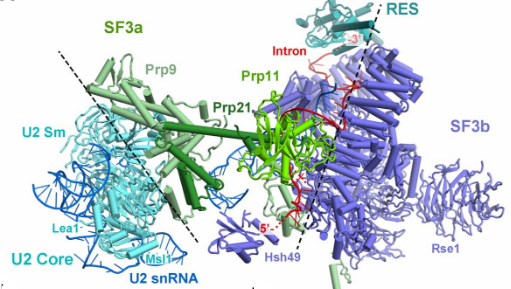
Professor Shi Yigong of the School of Life Sciences of Tsinghua University published the major research results on the assembly mechanism and structure of the splice body in the “Science” magazine. The paper entitled “Structures of the Fully Assembled Saccharomyces cerevisiae Spliceosome Before Activation” reports two completely assembled key conformations of the Saccharomyces cerevisiae spliceosome in the preactivated phase – Precursor pre-catalytic spliceosome (defined as “pre-B complex”) and pre-catalytic spliceosome…
